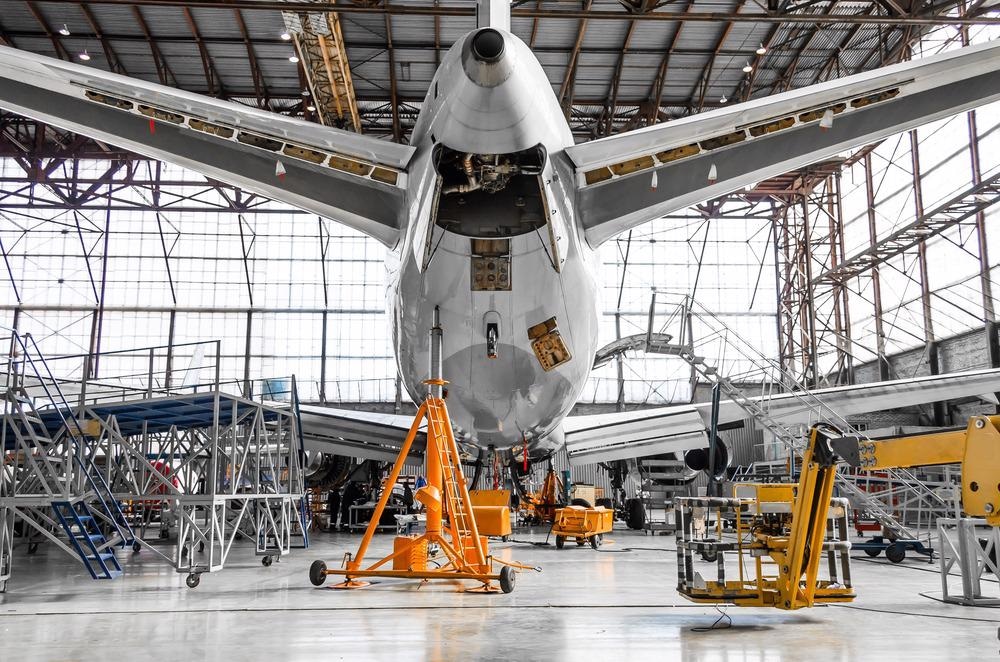
Image Credit: aapsky/Shutterstock.com
In the aviation industry, non-destructive testing (NDT) techniques play an essential role in minimizing costs and keeping people safe.
Safety is important in every industry, but especially so in aviation, as one minor flaw or mistake can lead to tragedy. Aerospace components made with imperfections can result in tragic incidents. This risks the well-being and lives of people, in addition to significant amounts of money. Raw materials and components should be analyzed for safety and dependability by using an assorted set of inspections across all stages of production and maintenance.
NDT techniques are a critical group of these evaluation methods used during the production, construction, and maintenance of raw materials and parts – all of which demand thorough analyses that can detect any defects in a test subject.
NDT techniques also serve as a quality assurance measure used in the evaluation and certification of aircraft parts. Flaws or inconsistencies that are overlooked during production processes can result in costly repairs and part replacements that eat away at a company's finances. The cost is increased much more if serious damage occurs, to the point a part or an entire aircraft section must be thrown away.
During scheduled maintenance, NDT techniques can also be employed to recognize flaws and the effects of wear. Problems can then be dealt with promptly as they show up. However, resolving an issue once does not guarantee that it will not reappear down the road.
With all of this in mind, the following non-destructive techniques are commonly used in the aviation industry.
Visual Inspection
Visual inspection by a properly trained individual can reveal cracks, leaks, and rust, and is one of the most frequently used NDT techniques. Most visual inspection is done with equipment such as a magnifying lens, special lighting, borescope, video camera and/or magnifying mirror. This NDT technique is often used in the course conducting other tests.
Laser Testing Methods
Laser testing is a category of NDT techniques that can be split into three different techniques: holographic testing, laser profilometry, and laser shearography. In holographic testing, a laser is used to identify variations in the exterior of material after heat, vibration or pressure has been applied. Outcomes are then contrasted to an unstressed control sample to reveal any flaws that are present.
Laser Profilometry is performed with a high-speed rotating laser equipped with miniscule optics. Used to recognize cracks, corrosion, significant wear and other flaws, laser profilometry detect modifications in a surface by generating a 3D image.
In laser shearography, laser light is used to produce images both before and after a surface is stressed. The resulting images are contrasted to recognize any flaws or deterioration.
Liquid Penetrant Testing
Considered a cost-effective technique for routine inspection, liquid penetrant testing is often used during the maintenance, repair and overhaul (MRO) of aircraft engines. The procedure is highly effective and includes several steps to assure reliable results.
First, a test object is washed and dried. Then, a tinted liquid is poured onto the test surface, where it could seep into tiny cracks, and be seen. After seeping into cracks or holes, the fluid is left to dry. Excess fluid is rinsed away, and the test object is then inspected, often with the use of UV light. Any defects or flaws are typically quite apparent.
Acoustic Emission Testing
This NDT technique makes use of sensors to identify short jolts of ultrasound released by crevices or gaps in a test surface. Leaks, results of corrosion, and stressed areas can all be recognized with acoustic emission evaluations, making it a suitable step during tests of pressurized vessels. It is widely used to identify flaws in fittings, joints, welds, bolts, and adhesive bonds. The procedure is comparable to sonar, which also records and evaluates sound wave reflections.
Eddy Current Testing
This technique makes use of an alternating current coil to place a conductive test part into an electromagnetic field to identify surface and sub-surface flaws, including cracks, holes, wear and heat damage. When the electromagnetic field is used on metal, any flaws disrupt the electromagnetic field. One major benefit of the Eddy Current technique is that it yields a digital record for deep analysis.
Magnetic Particle Testing
This method also entails applying a magnetic field to a test item. However, it also involves the application of magnetic particles in either dry form or suspended-in-liquid forms. These particles are made in different colors and many are fluorescent, to increase visibility under appropriate lighting.
The procedure is often used to identify structural issues in ferromagnetic aircraft parts, such as yokes, coils and heads.
Infrared Evaluating
This technique calls for the infrared mapping of the surface of an object. It could be used to identify damage such as delamination, corrosion and bond deterioration by discovering irregularities in the flow of heat over a material or part.
Resources and Further Reading
Marlin Steel. What is NDT (Non-Destructive Testing) for the Aerospace Industry. [Online] Available at: https://www.marlinwire.com/blog/what-is-ndt-non-destructive-testing-for-the-aerospace-industry
CloudVisit. How Can Aviation Maintenance Software maximize Efficiency and Accuracy in Non-Destructive Testing In Aircraft Maintenance? [Online} Available at: https://www.cloudvisit.com/how-can-aviation-maintenance-software-maximize-efficiency-and-accuracy-in-non-destructive-testing-in-aircraft-maintenance/
Sampson, B. Introduction to non-destructive testing. Aerospace Testing International. [Online] Available at: https://www.aerospacetestinginternational.com/features/introduction-to-non-destructive-testing.html
Disclaimer: The views expressed here are those of the author expressed in their private capacity and do not necessarily represent the views of AZoM.com Limited T/A AZoNetwork the owner and operator of this website. This disclaimer forms part of the Terms and conditions of use of this website.